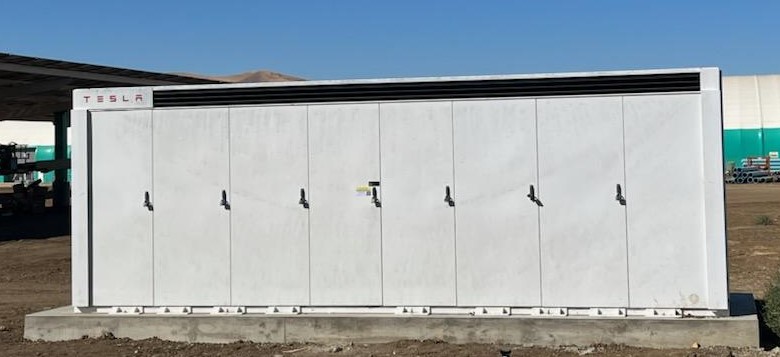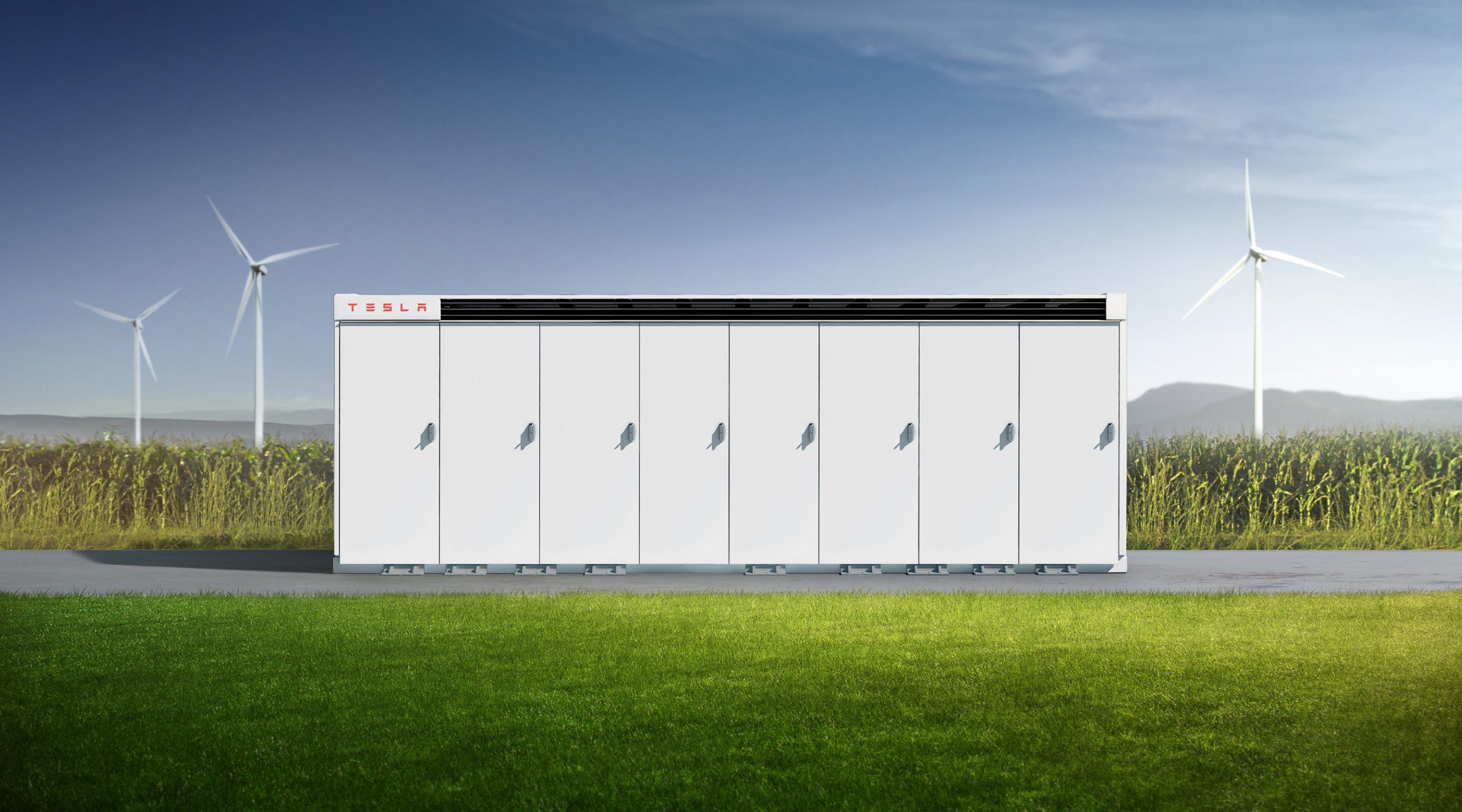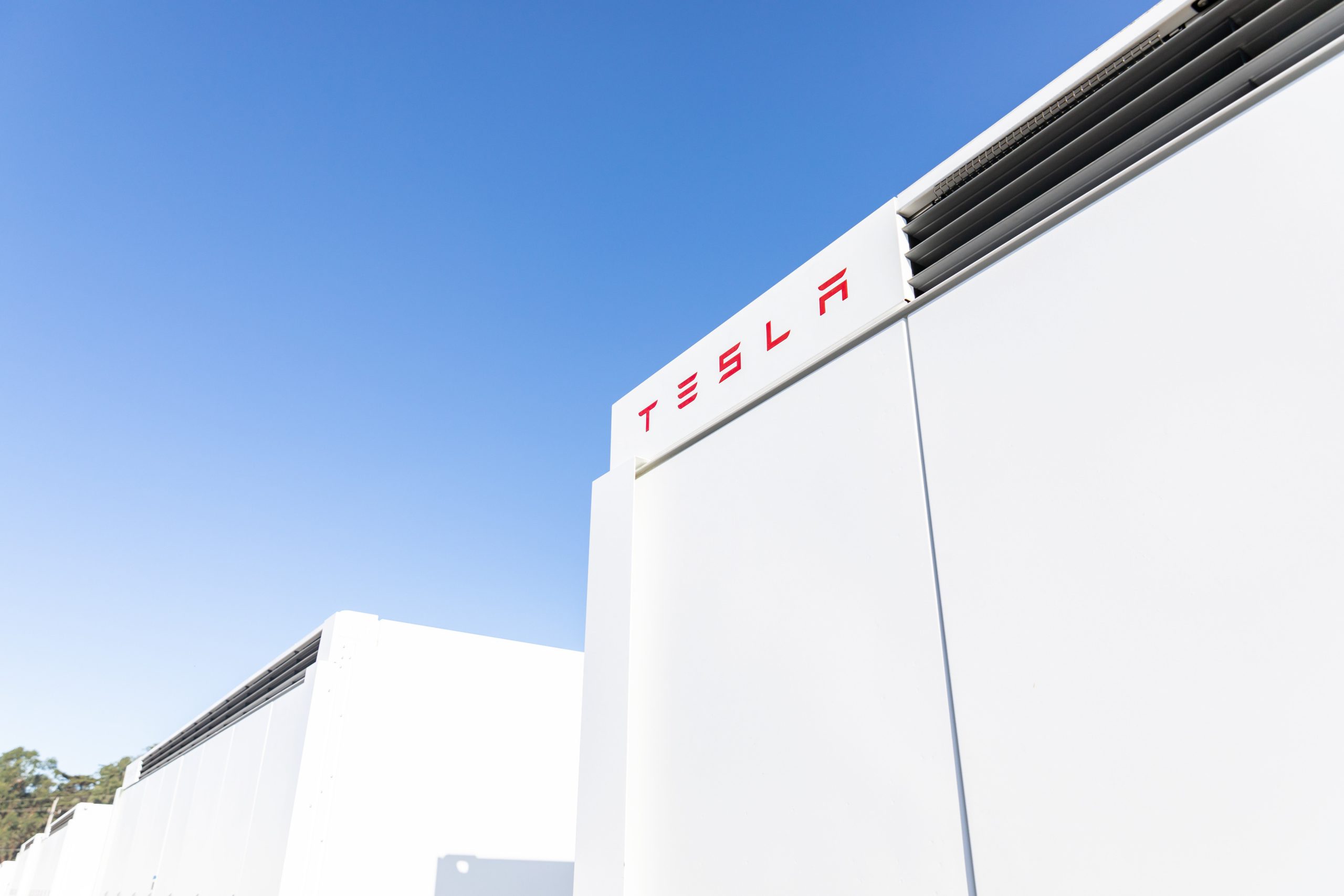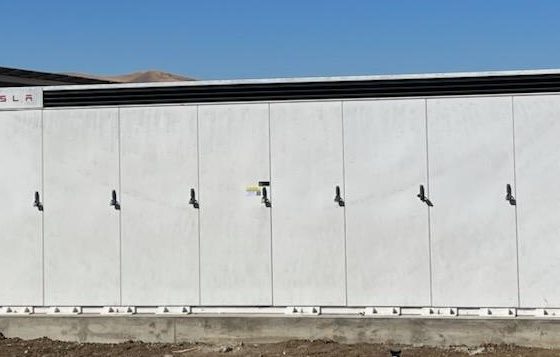A Tesla Megapack is powering a large housing factory completely off-grid in Patterson, California, with energy from a large array of on-site, PVGraf solar panels. The factory isn’t connected to the local power grid, and this is the first time a Tesla Megapack has been deployed and running completely off-grid. The system has been operating without any issues since November.

S2A Modular, a tech company that manufactures modular homes, tiny houses, and more that run on direct-current (DC) power, owns the Tesla Megapack, and its president and cofounder, John Rowland, granted Teslarati an exclusive interview. The company is also in the business of addressing housing for the homeless as well as making luxury homes and single-family homes.
John Rowland, S2A Modular’s president, and cofounder, granted Teslarati an exclusive interview. He shared with Teslarati that the company has 35 facilities, with five currently under construction and Tesla Megapacks on order. The first one in Patterson, California, is completely off the grid, and John has been working with Tesla to monitor its progress.
The delivery and installation of the Tesla Megapack, John explained, was “very smooth.” All of the infrastructure was in place, and it only took a couple of days to install the battery.
John told Teslarati that the reason why he went with Tesla is that he is a huge fan of both Tesla and Elon Musk. Initially, he had planned to buy the Tesla PowerPacks but by the time the factory came to fruition, Tesla Megapacks were available. As a homebuilder, he wanted to build homes that run on batteries. John said that engineered and built the second off-grid Tesla-powered home in North America.
“When I built that home, I decided I wanted to scale and build homes that were meant to run on batteries because this is how that house was engineered and built. It was the lowest voltage, lowest amperage home on the planet.”

John realized that in order to scale, he would need a factory and wanted to take the same approach that he has taken to engineering and building the homes and “engineer and build a factory that was made to run off-grid.
The hundred thousand-square-foot factory has no gas, or propane, only graphene solar panels, and a Tesla Megapack. “And no connection to the electrical grid.”
John pointed out that he has had a good relationship with Tesla since 2015, and once the Megapacks were available, he ordered one for each of the facilities.
“We’ve got the first one in Patterson, California, and it’s been up and running a little over a month now. And it’s running like a champ. The whole factory’s powered off-grid, and it’s a huge success, so we’re looking to carry it over to our next facilities.”
John and his team and Tesla are monitoring the battery three times a day since it is completely off-grid. At first, there was a little hesitation on Tesla’s part for installing a completely off-grid Megapack, but John was able to win them over, and things are going smoothly.
“This is the first time that a Megapack was programmed to run off-grid. They’re set to take a trickle charge from the grid 24/7, and it took some convincing to get Tesla to allow us to do it this way. At first, they said, ‘you’re a couple of years ahead of us,’ but they finally agreed to allow us to do it, and now they’re using it as beta. They’re monitoring it just like we are.”
“One of Tesla’s head engineers that we work with told us that when we powered it up, it would take four days for our solar to charge the battery fully. We did it in seven and a half hours.”

John explained that the solar panels his company uses are made with specially manufactured graphene solar panels. “They’re the only company in the world using graphene, and they have 20 worldwide patents on it. At S2A, we paid and file our own UL( Underwriter Labs) to have our own UL-rated panel produced.”
When asked about feedback, John explained that he talks to Tesla’s engineers regularly and provides updates on the battery’s performance.
“It’s quite to our surprise It’s a 1.4-megawatt battery, and we’re able to keep it about 90% even with all of our equipment running. It’s really working better than our expectations.”
One thing John wasn’t expecting was the surplus of energy. He actually plans to connect the Megapack to the grid next year so that he can discharge the excess power and help take some of the burdens away from the local grid.
“Our inverters are shutting off every day because we’re producing more power than we can use. Our factory is actually net-positive, and we will start contributing back to the grid next year.”
“We’ve got the battery set right now–when it reaches 97% capacity, the inverter shuts down and stops producing power. We’ve been monitoring it three times a day, and it’s been shutting off every day. Even with the factory running at full speed, we still produce excess energy.”
John added that he also purchased the Tesla Semi and plans to use them to deliver homes to customers.
Disclosure: Johnna is a $TSLA shareholder and believes in Tesla’s mission.
Your feedback is welcome. If you have any comments or concerns or see a typo, you can email me at johnna@teslarati.com. You can also reach me on Twitter at @JohnnaCrider1.
Teslarati is now on TikTok. Follow us for interactive news & more. Teslarati is now on TikTok. Follow us for interactive news & more. You can also follow Teslarati on LinkedIn, Twitter, Instagram, and Facebook.

News
Tesla starts showing how FSD will change lives in Europe
Local officials tested the system on narrow country roads and were impressed by FSD’s smooth, human-like driving, with some calling the service a game-changer for everyday life in areas that are far from urban centers.

Tesla has launched Europe’s first public shuttle service using Full Self-Driving (Supervised) in the rural Eifelkreis Bitburg-Prüm region of Germany, demonstrating how the technology can restore independence and mobility for people who struggle with limited transport options.
Local officials tested the system on narrow country roads and were impressed by FSD’s smooth, human-like driving, with some calling the service a game-changer for everyday life in areas that are far from urban centers.
Officials see real impact on rural residents
Arzfeld Mayor Johannes Kuhl and District Administrator Andreas Kruppert personally tested the Tesla shuttle service. This allowed them to see just how well FSD navigated winding lanes and rural roads confidently. Kruppert said, “Autonomous driving sounds like science fiction to many, but we simply see here that it works totally well in rural regions too.” Kuhl, for his part, also noted that FSD “feels like a very experienced driver.”
The pilot complements the area’s “Citizen Bus” program, which provides on-demand rides for elderly residents who can no longer drive themselves. Tesla Europe shared a video of a demonstration of the service, highlighting how FSD gives people their freedom back, even in places where public transport is not as prevalent.
What the Ministry for Economic Affairs and Transport says
Rhineland-Palatinate’s Minister Daniela Schmitt supported the project, praising the collaboration that made this “first of its kind in Europe” possible. As per the ministry, the rural rollout for the service shows FSD’s potential beyond major cities, and it delivers tangible benefits like grocery runs, doctor visits, and social connections for isolated residents.
“Reliable and flexible mobility is especially vital in rural areas. With the launch of a shuttle service using self-driving vehicles (FSD supervised) by Tesla in the Eifelkreis Bitburg-Prüm, an innovative pilot project is now getting underway that complements local community bus services. It is the first project of its kind in Europe.
“The result is a real gain for rural mobility: greater accessibility, more flexibility and tangible benefits for everyday life. A strong signal for innovation, cooperation and future-oriented mobility beyond urban centers,” the ministry wrote in a LinkedIn post.
News
Tesla China quietly posts Robotaxi-related job listing
Tesla China is currently seeking a Low Voltage Electrical Engineer to work on circuit board design for the company’s autonomous vehicles.

Tesla has posted a new job listing in Shanghai explicitly tied to its Robotaxi program, fueling speculation that the company is preparing to launch its dedicated autonomous ride-hailing service in China.
As noted in the listing, Tesla China is currently seeking a Low Voltage Electrical Engineer to work on circuit board design for the company’s autonomous vehicles.
Robotaxi-specific role
The listing, which was shared on social media platform X by industry watcher @tslaming, suggested that Tesla China is looking to fill the role urgently. The job listing itself specifically mentions that the person hired for the role will be working on the Low Voltage Hardware team, which would design the circuit boards that would serve as the nervous system of the Robotaxi.
Key tasks for the role, as indicated in the job listing, include collaboration with PCB layout, firmware, mechanical, program management, and validation teams, among other responsibilities. The role is based in Shanghai.
China Robotaxi launch
China represents a massive potential market for robotaxis, with its dense urban centers and supportive policies in select cities. Tesla has limited permission to roll out FSD in the country, though despite this, its vehicles have been hailed as among the best in the market when it comes to autonomous features. So far, at least, it appears that China supports Tesla’s FSD and Robotaxi rollout.
This was hinted at in November, when Tesla brought the Cybercab to the 8th China International Import Expo (CIIE) in Shanghai, marking the first time that the autonomous two-seater was brought to the Asia-Pacific region. The vehicle, despite not having a release date in China, received a significant amount of interest among the event’s attendees.
Elon Musk
Elon Musk and Tesla AI Director share insights after empty driver seat Robotaxi rides
The executives’ unoccupied tests hint at the rapid progress of Tesla’s unsupervised Robotaxi efforts.

Tesla CEO Elon Musk and AI Director Ashok Elluswamy celebrated Christmas Eve by sharing personal experiences with Robotaxi vehicles that had no safety monitor or occupant in the driver’s seat. Musk described the system’s “perfect driving” around Austin, while Elluswamy posted video from the back seat, calling it “an amazing experience.”
The executives’ unoccupied tests hint at the rapid progress of Tesla’s unsupervised Robotaxi efforts.
Elon and Ashok’s firsthand Robotaxi insights
Prior to Musk and the Tesla AI Director’s posts, sightings of unmanned Teslas navigating public roads were widely shared on social media. One such vehicle was spotted in Austin, Texas, which Elon Musk acknowleged by stating that “Testing is underway with no occupants in the car.”
Based on his Christmas Eve post, Musk seemed to have tested an unmanned Tesla himself. “A Tesla with no safety monitor in the car and me sitting in the passenger seat took me all around Austin on Sunday with perfect driving,” Musk wrote in his post.
Elluswamy responded with a 2-minute video showing himself in the rear of an unmanned Tesla. The video featured the vehicle’s empty front seats, as well as its smooth handling through real-world traffic. He captioned his video with the words, “It’s an amazing experience!”
Towards Unsupervised operations
During an xAI Hackathon earlier this month, Elon Musk mentioned that Tesla owed be removing Safety Monitors from its Robotaxis in Austin in just three weeks. “Unsupervised is pretty much solved at this point. So there will be Tesla Robotaxis operating in Austin with no one in them. Not even anyone in the passenger seat in about three weeks,” he said. Musk echoed similar estimates at the 2025 Annual Shareholder Meeting and the Q3 2025 earnings call.
Considering the insights that were posted Musk and Elluswamy, it does appear that Tesla is working hard towards operating its Robotaxis with no safety monitors. This is quite impressive considering that the service was launched just earlier this year.









